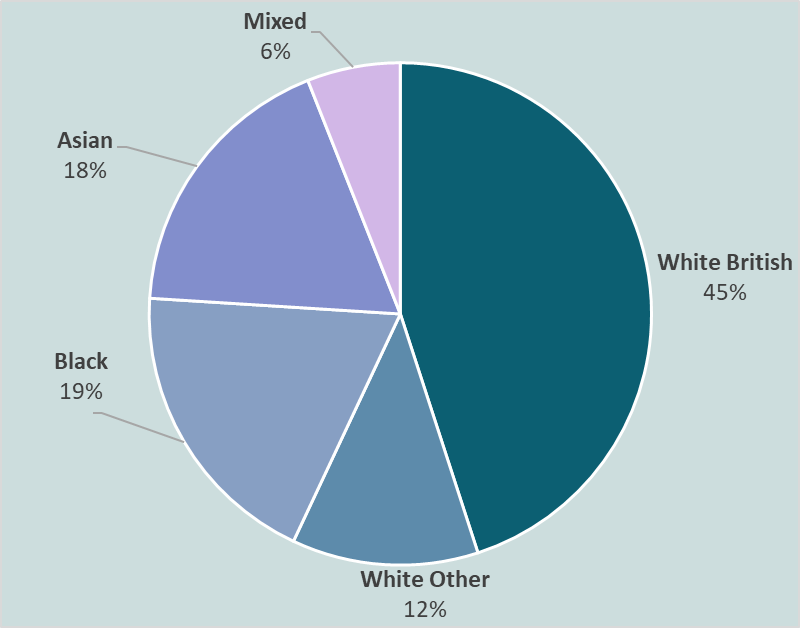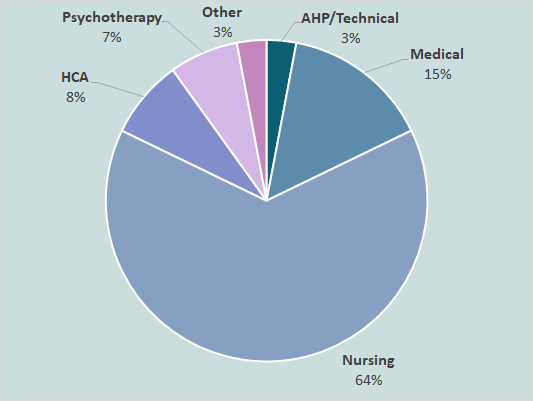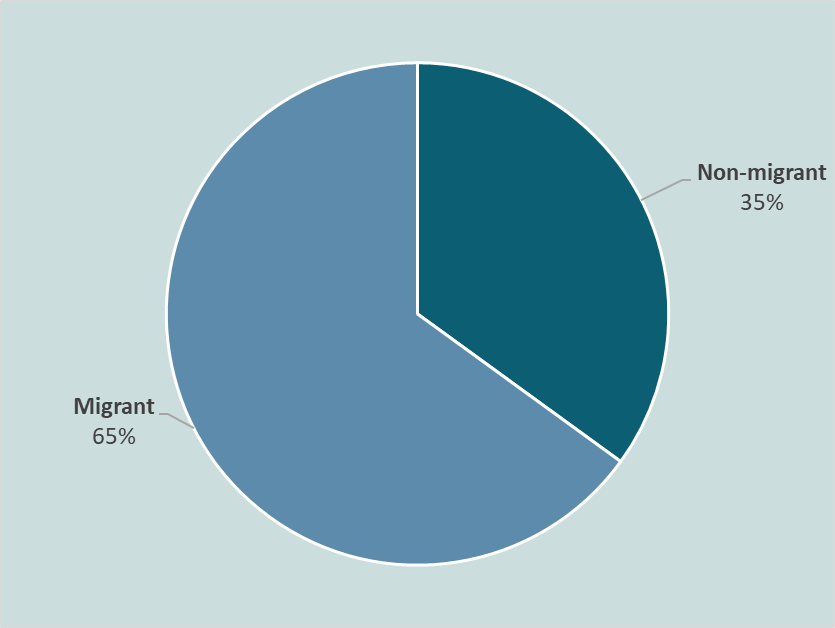TIDES Phase 1
Overview of Data

Publications
Gazard, B., Chui, Z., Harber-Aschan, L., MacCrimmon, S., Bakolis, I., Rimes, K., Hotopf, M. & Hatch, S. L. (2018). Barrier or stressor? The role of discrimination experiences in health service use. BMC public health, 18(1) 1354.
Chui, Z., Gazard, B., MacCrimmon, S., Harwood, H., Downs, J., Bakolis, I., Polling, C., Rhead, R. & Hatch, S. (2020). Inequalities in referral pathways for young people accessing secondary mental health services in south east London. European Child & Adolescent Psychiatry, 1-16.
What Was the Survey About?
What is the TIDES interview study?
Who took part in the survey?
Over 900 healthcare practitioners working across London NHS Trusts took part in the survey in 2018-19.
HCA= healthcare assistant; AHP = allied health professional



Virtual Reality
The TIDES Virtual Reality (VR) study uses innovative VR methods to examine how bias and discrimination influences clinical decision making. This will enable us to tackle inequalities and discrimination experiences in health services.
What has happened so far?
A novel VR simulation was developed to investigate the role of bias and discrimination in clinical decision making. An iterative and collaborative process was used to build and refine the content of the VR simulation based on input from the core TIDES team, clinical experts and the KCL Virtual Reality Research Lab. In our simulation, we were able to manipulate various sociodemographic characteristics of the virtual patients (e.g., gender, race and migration status) to investigate bias and discrimination in clinical decision making from an intersectional perspective. Thirty-five healthcare practitioners were recruited to the study between January 2020 and September 2022.
The participant’s task was to conduct a 10-minute consultation with each virtual patient to determine their health problem and provide a treatment recommendation. After each consultation with the virtual patients, participants were asked to complete a short survey to provide ratings of the virtual patients’ personality characteristics, probable behaviour and social roles, and overall health.
What Next?
We are currently analysing both quantitative and qualitative data from the study which will be published shortly.
Data Collection
We completed data collection for our healthcare practitioner sample in February 2020; a total of 48 interviews were conducted with student and qualified nurses, healthcare assistants and nursing associates.
Thank you to everyone who participated and took the time to share their experiences with us.
We also interviewed senior staff to gain multiple perspectives across healthcare. A total of 24 interviews were completed between January 2021 and March 2021.
Analysis
Existing interview data are being analysed using thematic analysis. Here is information about the first of a series of papers involving these data.
Meet the Team
Find out more about the team involved in Collective Action for Race Equity in Health and Social Care
